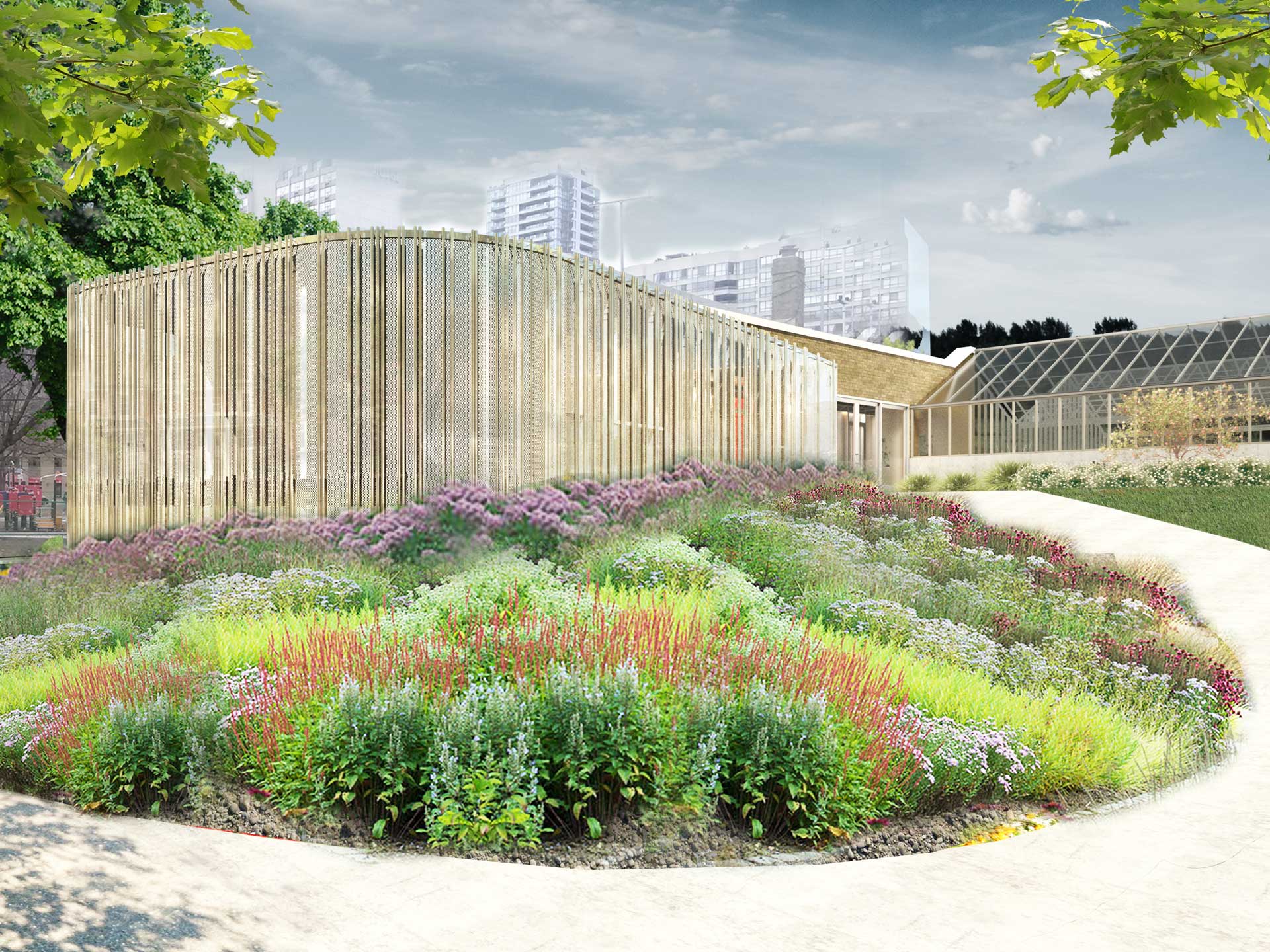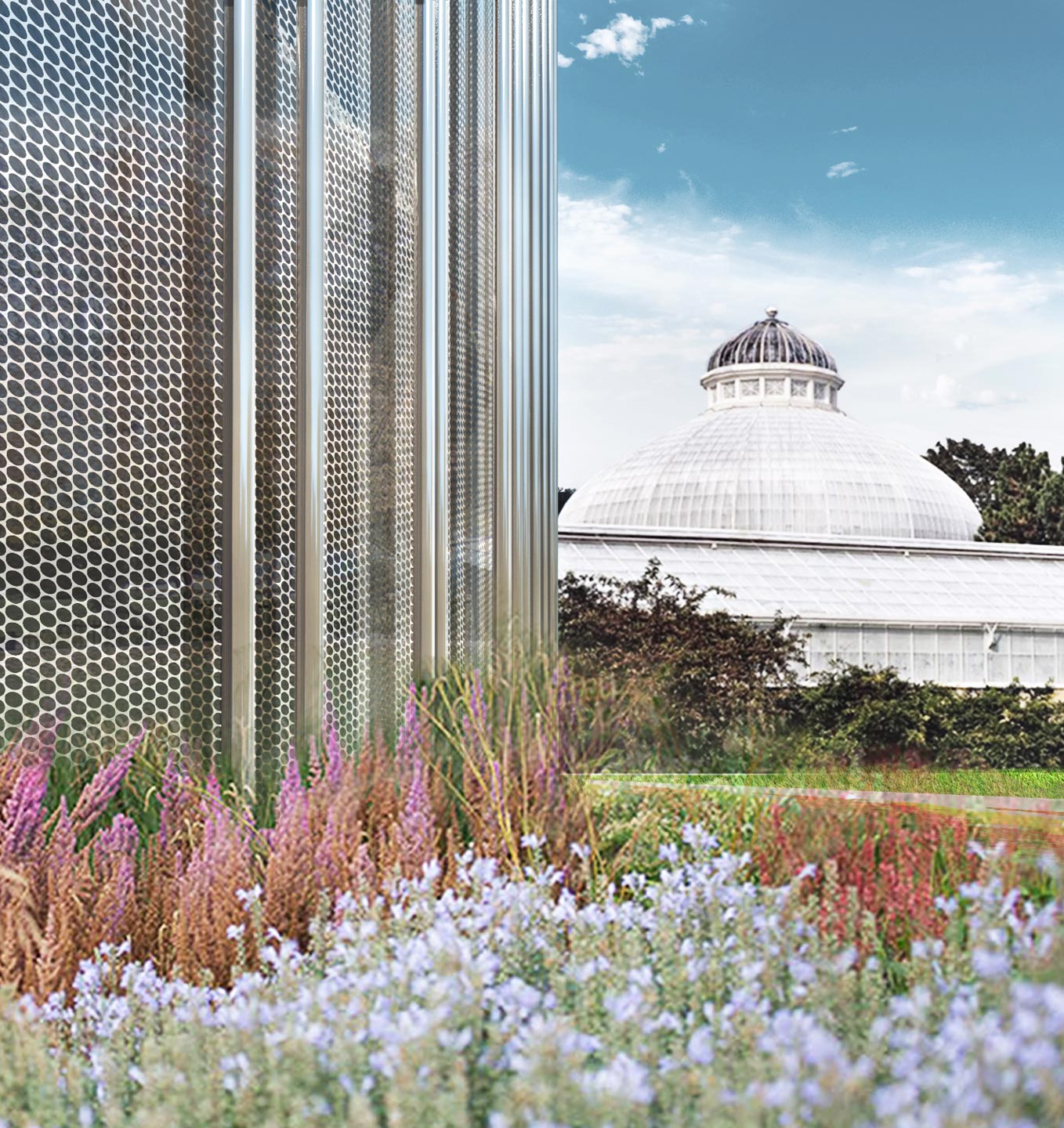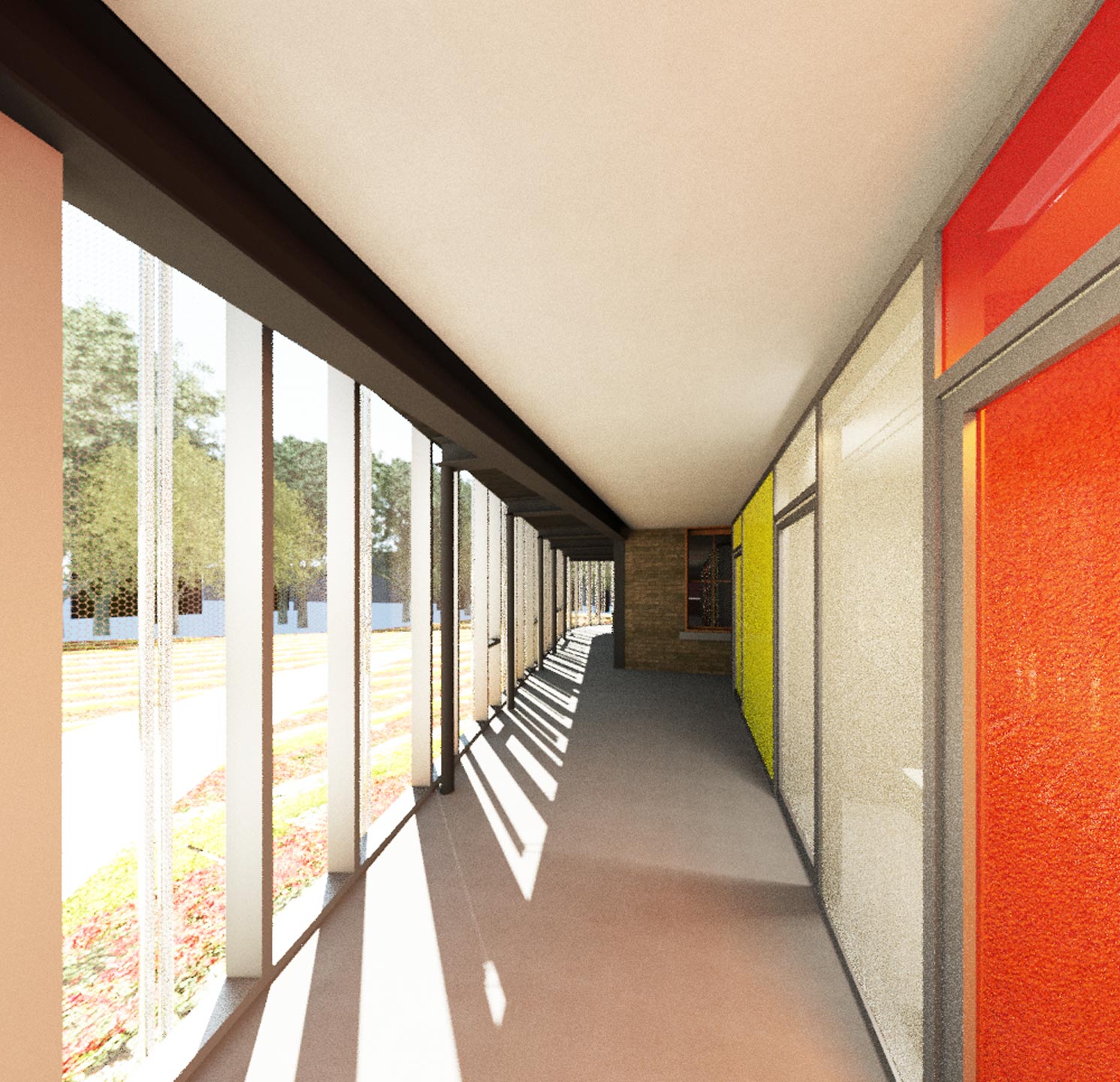Allan Gardens Conservatory, Toronto, ON, Canada

The cast-iron palm house with glass dome from 1910 is a landmark in one of Toronto's oldest parks. The feasibility study for net-zero or near-net-zero renovation and addition of historic greenhouse was initiated by the city of Toronto. With greenhouses, the needs of the plants are paramount. Horizontal and vertical facades should mainly be transparent, which is in conflict with local renewable energy production. High heating requirements in winter are in conflict with the danger of overheating in summer, as well as high solar gains during the day and high energy losses at night. On top of this, the remarkable architectural value must be preserved.
For the warm season, the concept uses physics and thermodynamics to support ventilation with buoyancy and stratification. The existing earth duct under the palm house is given an air inlet on the outside. The tunnel passively cools the air from outside, which is warm in summer; it is let into the existing buildings and the new greenhouse at ground level. Inside, the air heats up and rises to the ceiling, where it is extracted by motorized fans. The entire volume of air flows out of the new greenhouse through the chimney of the existing boiler house, which now functions as a solar chimney. Its chimney effect gives the ventilation natural propulsion for an air exchange rate of up to 10 times per hour. An additional cooling option is provided by connecting the intake air flow to the geothermal field under the new greenhouse with a heating/cooling coil. As in the past, whitewashing from the outside protects against high solar gains through the facade of the stock during the summer. A flexible, mobile PV system takes over this task on the new building. Mounted on the roof, it prevents part of the solar energy from penetrating and converts it into electricity. It is flexible and can be removed and stored rolled up during the winter.
The quality of the envelope, combined with controlled natural ventilation, ensures low energy consumption in winter and good quality daylight at the same time. To preserve the architecture of the Palm House, only the glazing is replaced and seals are repaired. In the extension building, façade areas with low sun incidence will be made opaque and well insulated. The fresh air, preheated by the earth duct, flows into the renovated greenhouses. A heating coil in the intake air flow raises the temperature of the supply air to the desired level. A heat pump takes energy from the geothermal field and feeds the low temperature heating system. The ventilation flaps in the palm house remain closed, and all air moves into the new greenhouse via the connecting visitor paths. In high rooms, fans push the warm air down. The controlled air exchange ensures minimum ventilation and has a natural drive through the existing chimney. A heat exchanger transfers heat from the exhaust air back to the supply air.


